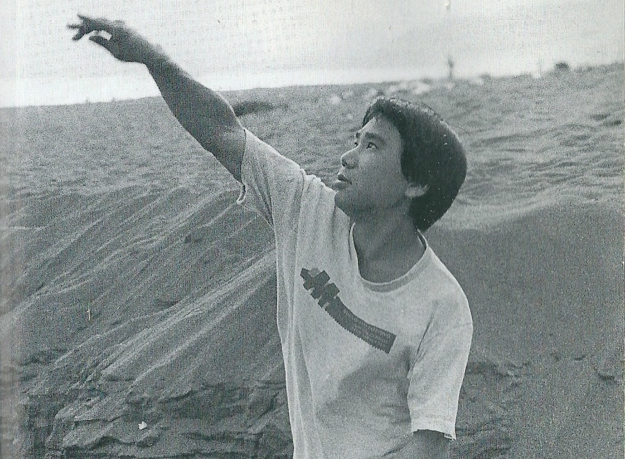“That’s what the world is, after all: an endless battle of contrasting memories.”
—1Q84
Haruki Murakami started running in 1982. He struggled at the beginning, like most of us would if we picked up long distance running on a whim, but eventually it got easier. Since then, he has completed over twenty-six marathons and countless long distance races. Like his running career, Murakami’s venture as a novelist had a shaky start. He started running as a way to keep active and sane while working on his first novel Hear the Wind Sing. After winning the Gunzo award for his first short novel, Murakami’s subsequent short novels were met with limited success. Then, in 1987, there was a breakthrough. Norwegian Wood sold over a million copies and became an instant hit with a cult following, establishing Murakami as a brilliant, unique and talented author. It’s easy to draw parallels between Murakami’s disciplined and hardworking approach to his running and his writing. “Hard work beats talent when talent doesn’t work hard” is a cliché, but it’s a cliché for a reason. It is Murakami’s combination of talent and dedication that has cemented him as a literary legend.
Before Murakami was a writer, he owned and ran a jazz club named Peter Cat in Tokyo. Raised on American novelists like Kurt Vonnegut and Jack Kerouac, there is a distinct Western influence in Murakami’s novels that set him apart from other Japanese writers. Rebelling against the formalist life trajectory, Murakami set himself apart from the rest from an early age –marrying young, rebelling against the traditional career path. Although his stories are typically set in Japan, they are characteristically un-Japanese, infused with references to Western poetry, music and literature, making them universally enjoyable for international readers and allowing for introspection on how Western culture has affected the collective psyche of the Japanese. In his biographical essay in the New Yorker, The Running Novelist, Murakami pinpoints the exact moment he decided to become a writer. Lying in the sun at a baseball game, he watched American batsman Dave Hilton hit a double, and in that exact moment decided he could write a novel. Like his whimsical and fantastical narratives, his writing career was born almost out of nowhere.
Murakami began his career with Trilogy of the Rat, which was comprised of three novels: Hear the Wind Sing, A Wild Sheep Chase, and Pinball, 1973. He has since called these novels “flimsy”, but you can see from these early works the themes of detachment and alienation that have become a hallmark of Murakami’s style. In 1985, Murakami published the experimental Hard-Boiled Wonderland and the End of the World, his first foray into dreamy surrealism, infused with magic and fantasy. Then came Norwegian Wood: the breakthrough. There is no exact reason for why this novel was so suddenly successful, but it’s easy to see why it was so popular. A beautiful tale of nostalgia and sexuality, set against a backdrop of paradoxical unrest, the novel struck a chord with Japanese youth. Norwegian Wood is fairly quotidian compared to Murakami’s other more sensational works. Still, he is able to create an ethereal landscape, even when describing the most mundane moments.
Following the success of Norwegian Wood, Murakami went on to publish a number of notable works. The Wind-Up Bird Chronicle blurs the lines between reality and fantasy, embedded with Murakami’s unmistakable sense of alienation. Kafka on the Shore is an experimental novel that tells two intertwining narratives side by side, marked by even and odd chapter numbers. Kafka develops Murakami’s intermingling of ordinary routine and magical realism. The story is full of unanswered riddles. Murakami explained in a later interview: “the form [the] solution takes will be different for each reader.” How wild. Murakami’s next work 1Q84 took nearly four years to write and takes the supernatural to the next level through a dystopian chain of events. Widely anticipated, the novel sold out its first printing on the day of release, showing the frenzy that Murakami’s cult following has amassed. His most recent novel Colorless Tsukuru Tazaki and His Years of Pilgrimage debuted at the top of the charts. A success both in his native Japan and abroad, Murakami has captured the imagination of readers from across the world.
Amongst Murakami’s surrealist oeuvre, are a number of non-fiction works. Underground and What I Talk About When I Talk About Running are still specifically Murakami-esque. Underground plays into the recurring theme of collective trauma in Murakami’s novels, detailing interviews with survivors of the Aum Shinrikyo gas attacks, a domestic terrorist attack where cult movement Aum Shinrikyo released sarin gas into the Tokyo underground. What I Talk About When I Talk About Running is a memoir of Murakami’s long time passion for long distance running. The book provides an insight into the workings of Murakami’s mind and how running has supplemented his writing practice.
Reading a Murakami book for the first time is like climbing into your bed after you’ve just changed your sheets. His style is crisp, clean and oddly comforting. When I’m standing around bored at the airport looking for a book, trying to decide how to spend my Audible credits or bumming around Dymocks trying to find something worth reading, I immediately gravitate to a Murakami book because I know it’s going to be good. I first read Norwegian Wood a couple of years ago and was captured by its melancholic and enchanting narrative. I subsequently ploughed through a fairly large chunk of his catalogue in a single summer. Murakami draws you in with his spectacular tales of everyday life, imbued with ennui and mystery. With a life just as fascinating as the stories he tells, it’s easy to see why this writer resonates across cultures and generations.
Ava Cadee | @avacadee
Ava is pretty sure her body is 87% hummus at this point.

